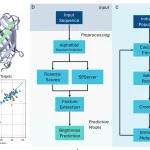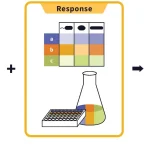BIOINFORMATICS TOOLS
Proteomics Tools
Protein Sequence Analysis and Function Prediction
- ProtParam – Allows the computation of various physical and chemical parameters for a given protein sequence.
- PEAKS CMD – It can perform de novo sequencing, protein identification, multi-engine protein identification,
PTM search, sequence homology searching and quantification. -
PEAKS Studio Xpro – A software platform with complete solutions for discovery proteomics, including protein identification and quantification, analysis of post-translational modifications (PTMs) and sequence variants (mutations), and peptide/protein de novo sequencing. (Commercial)
- PANTHER-PSEP – Estimates the likelihood of a particular nonsynonymous (amino-acid changing) coding SNP to cause a functional impact on the protein.
- ProtScale – It can compute and represent the profile produced by any amino acid scale on a selected protein.
- PredictProtein – Service for protein structure prediction, protein sequence analysis, protein function prediction, protein sequence alignments, bioinformatics.
- MutationTaster – Identifies disease-causing ability of sequence alterations.
-
MuPIT Interactive – Mapping variant positions to annotated, interactive 3D structures.
-
LS-SNP – An annotated database of SNPs. Currently only coding non-synonomous SNPs found in human genes are included.
- PeCop – Predicting Persistently Conserved Positions.
Protein Domain Prediction
- SMART@EMBL – The web server is used for the identification and analysis of protein domains within protein sequences..
- MEME – Motif-based sequence analysis tools.
- InterPro@EBI – Protein domain and family classification database.
- TMHMM 2.0 – Web server for the prediction of transmembrane helices in proteins.





